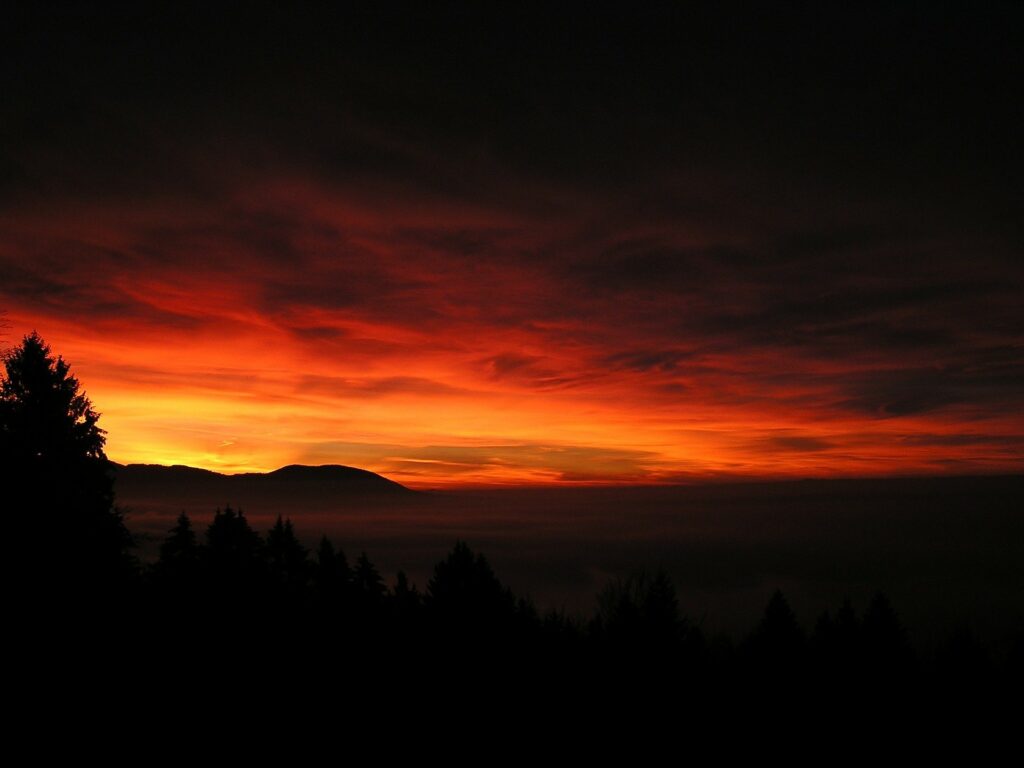
The sky is dark, and the stars are twinkling.
Maybe you can see Venus shining brightly near the horizon as the dawn approaches. Everything is quiet as the birds begin to sing. As the sky gets lighter and lighter, the first shafts of sunlight peek over the horizon, and then the orange ball, our sun, rises in all of its glory. The fleeting moment passes too quickly, and, for most of us, it is too elusive to see during our busy lives.
Sunsets, on the other hand, are much easier to see.
The special time when twilight approaches and beautiful colors play across the sky is wondrous to behold. When clouds are added to the mix, they change everything. The heavens are painted with shades of pink, blue, violet, orange, and yellow, adding to the mystery and wonder as the sun sinks into the night. It’s a daily game that one never tires to see.
I once had a boyfriend who was obsessed with sunset photos. Every time we traveled somewhere new, finding the perfect location to catch that perfect sunset was a game. Sometimes we drove frantically up and down mountain roads to finally find “the” place to capture the sun’s last moment.
Finding the perfect place to capture the sun’s last or first moments isn't always easy. The sun moves a little every day in a northern or southern direction. The sun's position changes if you stand in the same place throughout the year. It may rise over a mountaintop in June, and then in September, it rises over a valley.
Our ancestors were obsessed with the sun and observed its travels through the sky.
They had an intimate knowledge of the sun's yearly travels and knew the exact positions where the sun rose above the horizon and then sank back down again and made note of these places during solstices and equinoxes.
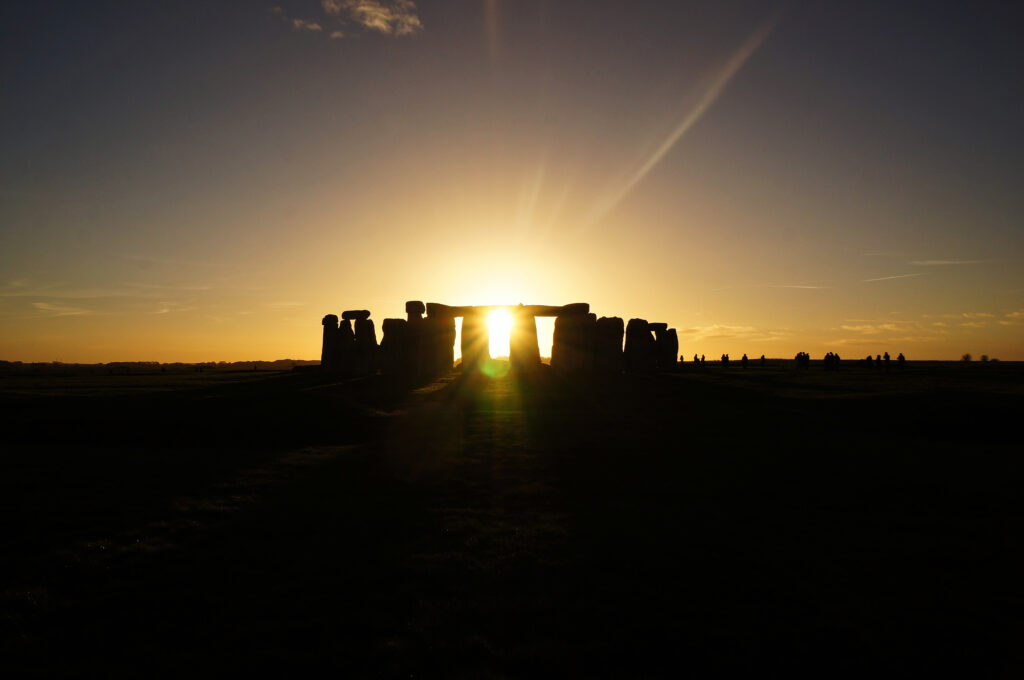
Instead of taking photos, our ancestors captured the moments of sunrise and sunset on the earth in stone.
They were such experts in the play of the sun on the earth that they oriented their stone structures to capture the first or last rays of the sun during select times. Dolmens and stone passageways were among the most ancient monuments to the sun. The opening of the dolmen would be positioned to capture the sun’s first or last light over the land. The stone structures were placed, so the sun’s light traveled through the dolmen or longer passage tombs to illuminate the stone in the back. In Scandinavia, the Vikings built stone ships to bury their dead, but some of them were for rituals and were oriented to the sun.
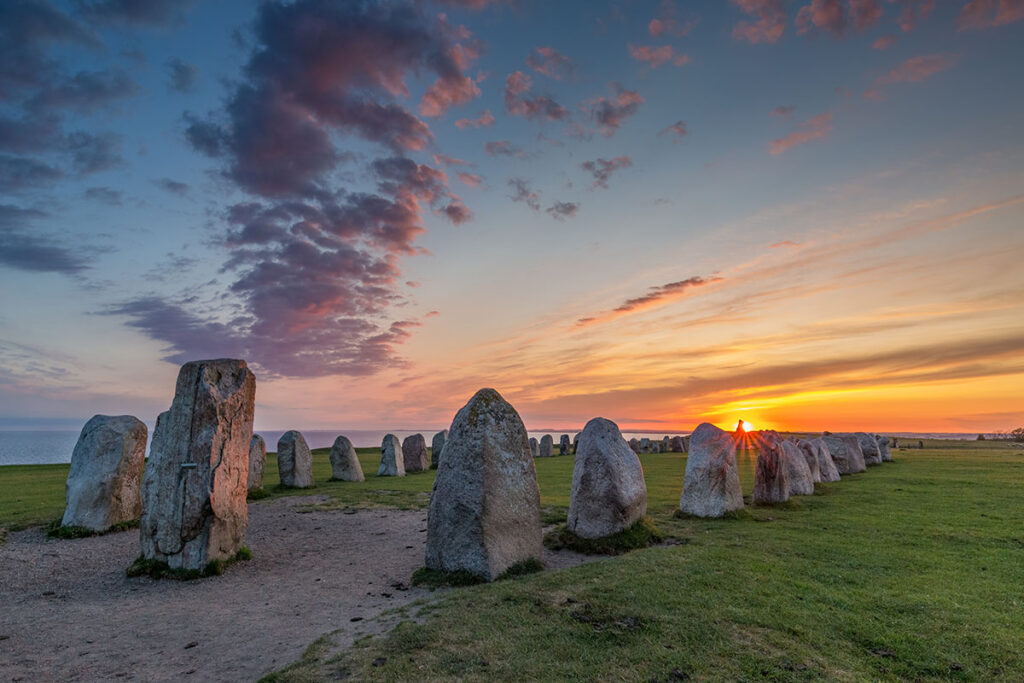
Ancient man was so captivated by the sun and its travels that he found a way to connect it to the earth. To do this, he had to observe the sun for at least a year, marking the sunrises and sunsets on the ground. The sun’s pattern on the earth over a year. Afterward, he discovered that the sun’s travels are rectangular or square. Then, he connected this celestial pattern to the earth.
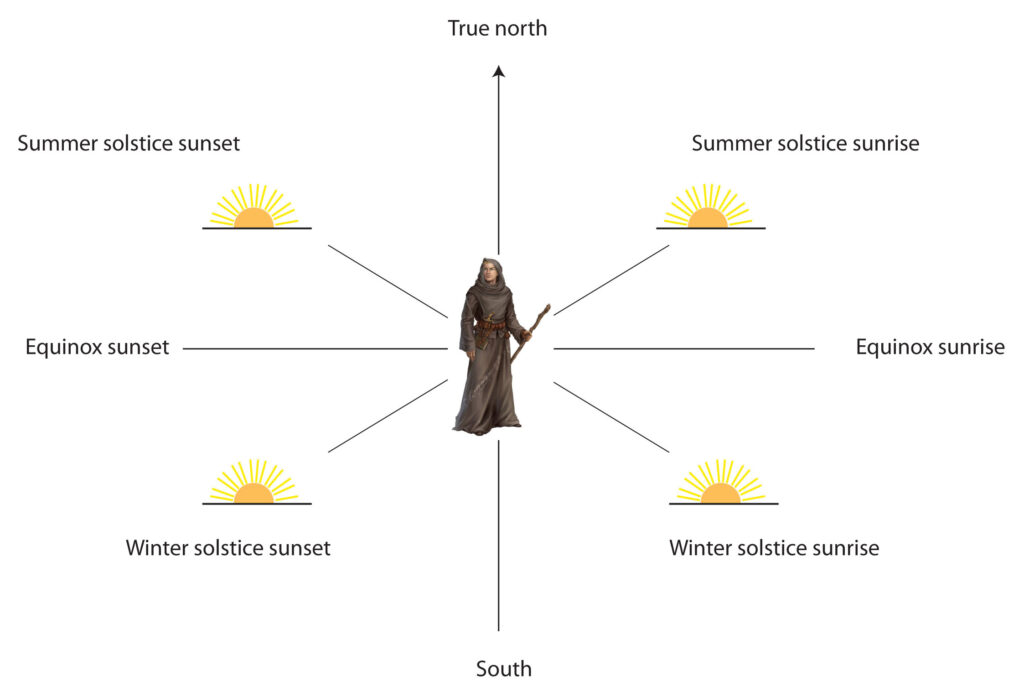
To do this, our ancestors discovered a pattern that emanated from the earth's center. It is a grid or net of energy felt by their shamans. This net is related to the sun as well. One of its names is the Solar Net (Natural Net), and when the sun is out, this net is strong and vibrant; when the sun goes down, the net moves sideways, and the energy is soft.

What better way to connect the sun with the earth than with a grid related to the sun?
A solar rectangle or, in my tradition of the Master Builders, a solsticial quadrilateral is formed. Out of this combination of the sun and the earth, the foundation emerged for measuring and building sacred sites. In previous articles and blogs, I’ve explored in depth what a solsticial quadrilateral and its attributes are. So, for the rest of this article, I’d like to delve into how we can use this magical solar rectangle, the synthesis of the sun and the earth, in our lives today.
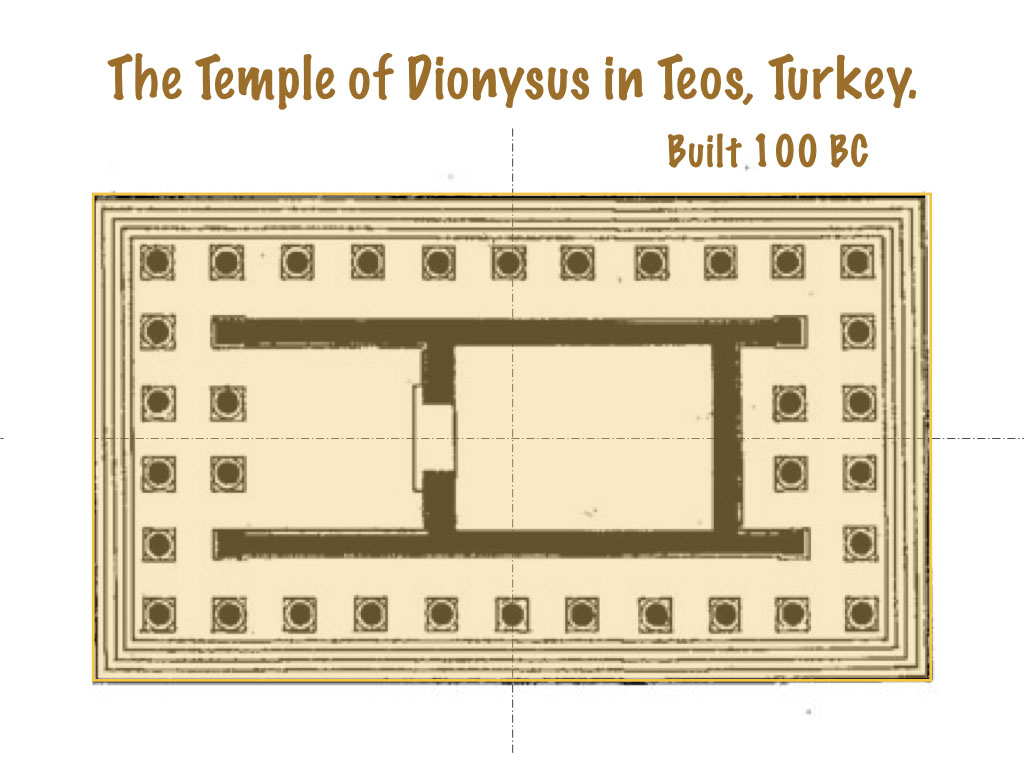
The traditional way to use a solar rectangle is to build with it.
Sacred sites were all made using it as the starting point and home designs. We can still do this today. A simple rectangular house built with the measurements of the solar rectangle will connect the people who live inside to the rhythms of the sun and earth. By doing this, the house becomes a living structure. The harmonious energy inside is calmer and less stressed. Animals and plants respond very well to the energy created by solsticial quadrilaterals. Dogs love it and will unerringly find the center point to recharge their energy. Plants grow better and are healthier when placed in a solsticial quadrilateral.
Many of our students are architects and have used their knowledge of the solsticial quadrilateral and the solar mandala to build wonderful homes for their clients. Below is Casa Vögel designed using two solsticial quadrilaterals of the place.
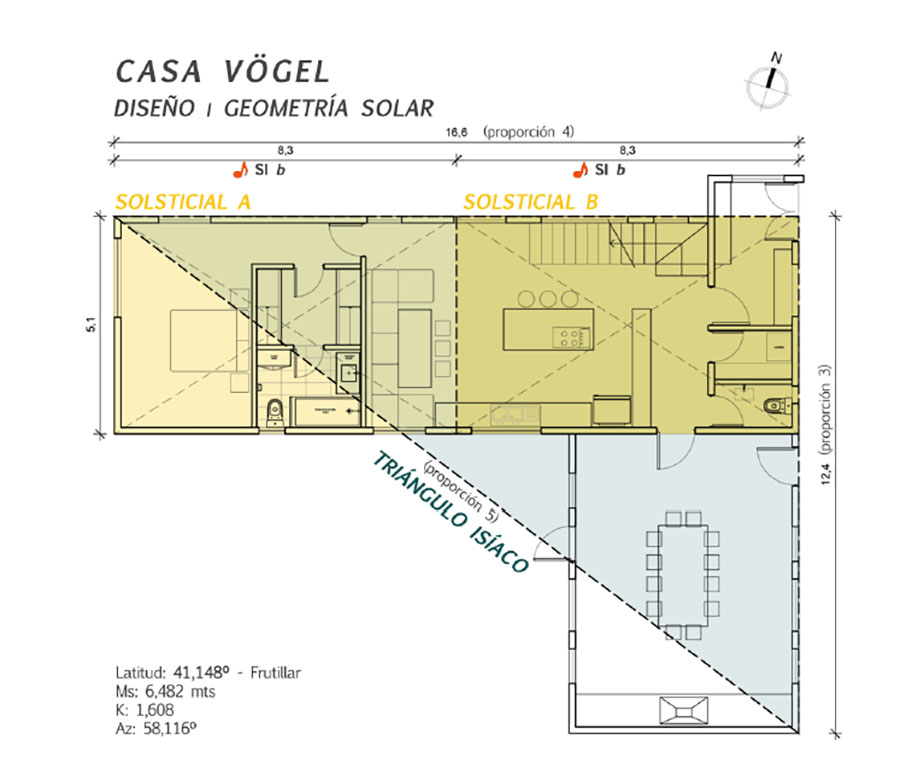

You can also harmonize existing homes with a solar rectangle as well.
To do this, we place a heavy weight in each of the four corners, in the pattern of the sun, for the exact location. By doing this, several things occur. First, you establish a relationship with the earth and cosmos with your home. The solsticial quadrilateral generates a harmonious space and is considered a living structure. Your energy system can now recharge in your home.
In the example to the left, a series of solsticial quadrilaterals (depicted with red dots) are linked together to harmonize the entire home.
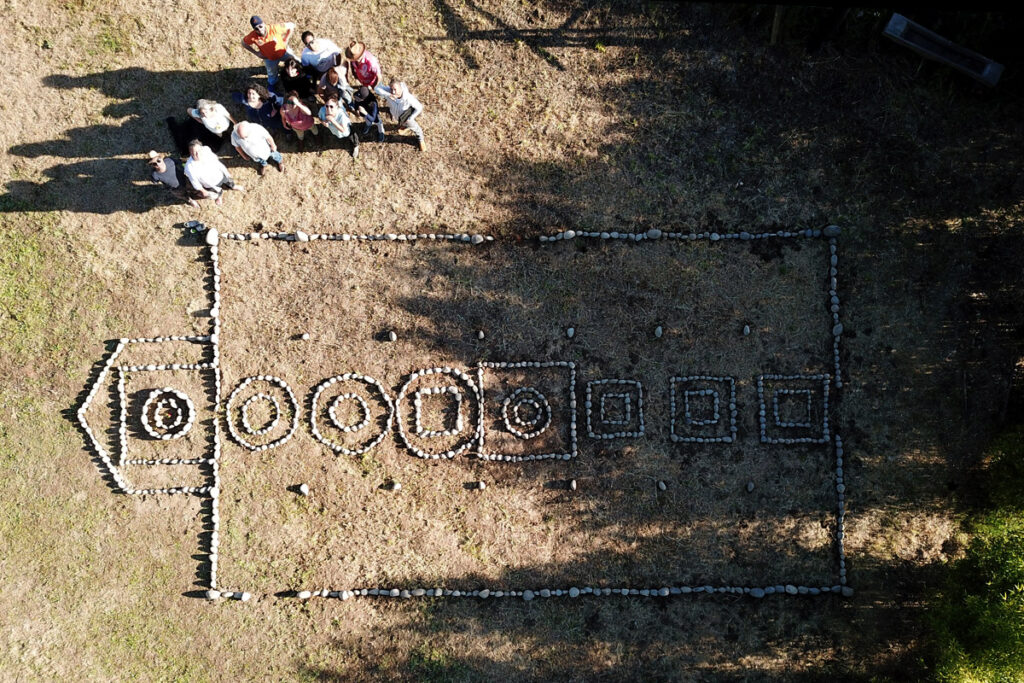
You can also use the solar rectangle as the foundation to build other structures such as labyrinths, stone circles, chakra paths, gardens, and meditation places. When you use the patterns of the sun and earth to build any structure, you create something alive, health-enhancing, and harmonious.
Capturing the sun on the earth is something extraordinary. From watching the first rays of the sun illuminating a dark passageway to seeing the sun sink below the horizon in a blaze of color, the sun awes us in all its splendor. Using the solsticial quadrilateral to build is a way for modern people to reconnect to the solar rhythms that are part of life on earth. Energetic Geometry offers certification training for connecting the sun to the earth. It’s fantastic training!
by Karen Crowley-Susani


